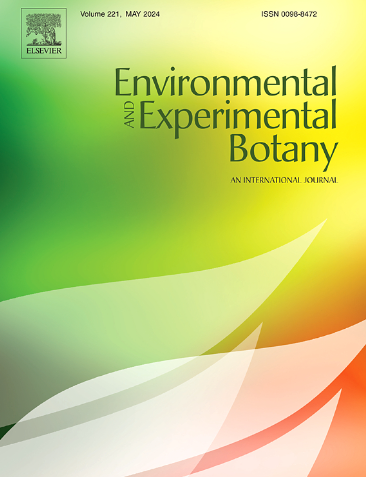两个化学品种的不同海拔分布与移植地衣的保守生理反应相冲突
IF 4.7
2区 生物学
Q2 ENVIRONMENTAL SCIENCES
引用次数: 0
摘要
毛地衣由毛地衣和毛地衣两个品种组成,它们在次生代谢产物和地理分布上存在差异。这项工作的目的是验证一个假设,即它们在海拔分布上也存在差异,可能是因为它们对气候因素的某些生理反应不同。在海拔760 ~ 2100 m的东南阿尔卑斯地区(a.s.l)进行了广泛的采样,结果表明,变种角藻(主要为酸,OA,次要为植酸,PA)局限于海拔最高的1500 ~ 2100 m之间,而变种糠藻(含PA)仍广泛分布于海拔最低的地区。随后选取不同降水水平(A<B<;C)的3个区域(A-C)。在每个地区,在林木线取样,并在960-1090 m a.s.l.的南北斜坡上、靠近和远离湖泊的四个迁地地点进行原位和移地移栽。在移植前后对叶绿素荧光、丙二醛和麦角甾醇进行量化,同时监测暴露期间的小气候条件。6个月后,除麦角甾醇在A、B品种中较低外,三项指标普遍下降,品种间差异不显著。由于这些差异总体上可以忽略不计,这两个品种的不同化学成分的适应性意义必须被解释为对食草动物的不同防御能力的结果,如果不是仅仅是由于高海拔地区普遍的气候条件引起的OA (PA的前体)积累的结果。本文章由计算机程序翻译,如有差异,请以英文原文为准。
Different altitudinal distributions of the two chemical varieties of Pseudevernia furfuracea collide with the conserved physiological response of transplanted lichens
The lichen Pseudevernia furfuracea consists of two varieties, furfuracea and ceratea, which differ in secondary metabolites and geographical distribution. The aim of this work is to test the hypothesis that they also differ in altitudinal distribution possibly because they differ in some physiological responses to climatic factors. An extensive sampling was carried out in the South-eastern Alps, from 760 to 2100 m above sea level (a.s.l.), which showed that var. ceratea (with olivetoric acid, OA, as major and physodic acid, PA, as minor) is restricted to the highest altitudes, between 1500 and 2100 m, while var. furfuracea (with PA) is still widespread at the lowest altitudes. Subsequently, three areas (A-C) with different precipitation levels (A<B<C) were selected. In each area, thalli were sampled at the tree line and transplanted in situ and at four ex situ sites at 960–1090 m a.s.l. on northern and southern slopes, near and far from lakes. Chlorophyll fluorescence, malondialdehyde, and ergosterol were quantified before and after transplantation, while microclimatic conditions were monitored during exposure. After six months, the three parameters generally decreased, with no significant intervarietal difference, except for ergosterol, which was lower in var. ceratea in A,B. As these differences are negligible overall, the adaptive significance of the different chemistry of the two varieties must be interpreted as a result of different defence capabilities against herbivory, if not as a mere consequence of the accumulation of OA (a precursor of PA) caused by the climatic conditions prevailing at higher altitudes.
求助全文
通过发布文献求助,成功后即可免费获取论文全文。
去求助
来源期刊

Environmental and Experimental Botany
环境科学-环境科学
CiteScore
9.30
自引率
5.30%
发文量
342
审稿时长
26 days
期刊介绍:
Environmental and Experimental Botany (EEB) publishes research papers on the physical, chemical, biological, molecular mechanisms and processes involved in the responses of plants to their environment.
In addition to research papers, the journal includes review articles. Submission is in agreement with the Editors-in-Chief.
The Journal also publishes special issues which are built by invited guest editors and are related to the main themes of EEB.
The areas covered by the Journal include:
(1) Responses of plants to heavy metals and pollutants
(2) Plant/water interactions (salinity, drought, flooding)
(3) Responses of plants to radiations ranging from UV-B to infrared
(4) Plant/atmosphere relations (ozone, CO2 , temperature)
(5) Global change impacts on plant ecophysiology
(6) Biotic interactions involving environmental factors.
 求助内容:
求助内容: 应助结果提醒方式:
应助结果提醒方式:


